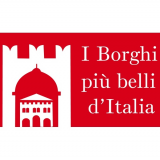
 I borghi più belli d'Italia
I borghi più belli d'Italia
Italian little Italies: Vigoleno, a patrol path through the countryside of Piacenza
- WTI Magazine #144 Oct 16, 2021
-

 I borghi più belli d'Italia
I borghi più belli d'Italia
Vigoleno is a village-castle where everything seems to be, despite the narrowness of the space, a labyrinth in which you never know where you are, whether in the medieval village or in the castle, so much so that one is mirrored in the other. Vigoleno has a great evocative power.
What impresses most, looking from the plain, are the wide expanses of stone of the perched village, which come to form the admirable curve of the enveloping walls, the rhythmic sequence of battlements, towers, bastions and then, inside, the short and narrow streets. On this stone are reflected, at every hour of the day, the various light conditions creating indefinable atmospheres.
The suggestions begin immediately after having passed the entrance door to the village, once provided with a drawbridge, entering the square of the fountain, with its closed views, the fragmentation of space, the oblique perspectives. On the east side of the square you can see the external barrel vault, in masonry, of a large underground room: it is the cistern, connected to the cellars of the castle, used in past centuries for the water needs of the inhabitants. The water, the oven, the well, the chapel of the living and the dead, the storerooms for flour and wine: Vigoleno is a perfect example of the living logic of the Middle Ages.
On the other side of the square stands the church of San Giorgio, in Romanesque style, completed in 1223 but probably begun around the middle of the 12th century. The parish church has a beautiful portal that is admired for the friezes of the arch, the telamons that support the architrave, the lunette with the bas-relief of the saint. The façade is made of local gray stone with golden reflections; the interior is austere, pervaded by the penumbra from which emerge the wonderful capitals of the columns with decorations typical of Romanesque art: anthropozoomorphic figures, volutes and foliage that seem to accompany the faithful in his mystical journey towards the altar. Here, frescoes of the 15th century have come to light, among which the St. George killing the dragon of the apse basin stands out.
The Oratory of the Beata Vergine delle Grazie was supposed to be the chapel of the castle. It is a late Mannerist construction of the 17th century (begun in 1604) with an elegant facade in the warm colors of sandstone. The tympanum encloses the coat of arms of the Scotti family and the interior, simple and austere, preserves the fresco of the Virgin breastfeeding enclosed in a sumptuous ancona of the 17th century.
Now, from the square of the fountain, you just have to cross the threshold and enter the castle. The rooms seem to chase each other and there is a small theater of eighteenth-century style frescoed by the Russian painter Alexandre Jacovleff for Princess Ruspoli Gramont.
Custodian of the millenary events of the village is the fountain, built in '500 by the feudal lords Counts Scotti "for human benefit". The fountain is made up of two circular basins: the upper one, in the shape of a basin, has spouts that let the water fall into the larger basin below, bordered by a low wall. Around it gravitated the life of the village. And today the fountain makes the small square of Vigoleno an intimate, cosy place, where you can close your eyes and enjoy the infinite. Then, it is enough to look at the ancient parish church in front of it, the white horse of S. Giorgio emerging from the mystic penumbra in which it is wrapped, to remember the distant times of paladins and knights. Perhaps a young girl looked out of the graceful mullioned window, profiled in stone and decorated with three caryatids, which lightens the volume of the small tower of the castle. And a troubadour might have played the lute at the court party of the Scotti family. The patrol path seen from the keep evokes nocturnal cries, fierce assaults, perhaps at the time of the pilgrim depicted in the bas-relief set in the facade of S. Giorgio. All this is possible in Vigoleno. Even that a beautiful lady "sans merci" guides us with a flashlight to our room, along the stairs of the tower.
The name
The origins of Vigoleno date back to the Roman times: in fact, the name derives from the Latin form Vicus Lyaeo, place consecrated to Bacchus for the exquisiteness of its wines. Vigoleno is famous for its wine, produced using ancient methods and local grapes.